Baby Sea Turtles Crawling to Sea Moths Into a Light

It's a lucky few that witness a ocean turtle'southward outset foray into the globe. Seeing sea turtles brand their way into the ocean can be transformational, life-altering, and an unforgettable experience. However, sea turtle hatchlings have a famously catchy start to life and just ane/yard are estimated to survive to adulthood. Equally it is nesting season in many parts of the globe, we thought it would be a practiced idea to shed some lite on the difficulties new built-in turtles confront, and the best practices to follow when witnessing a bounding main turtle hatching experience.
Green Turtle Mama Coming Back To Nest
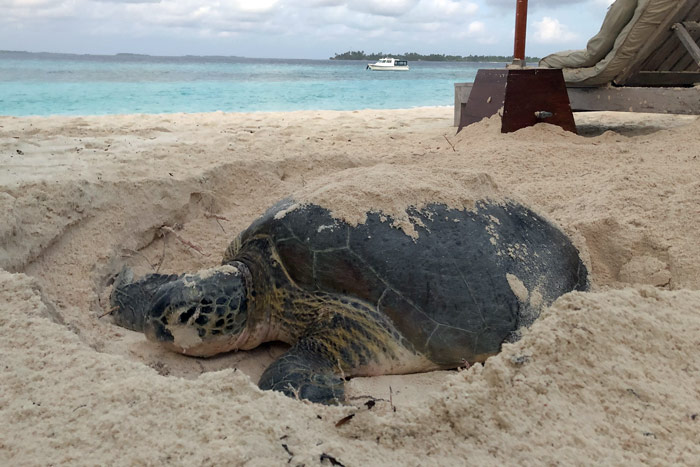
Nesting light-green sea turtles render to the same surface area where they themselves hatched to lay their eggs. These cold-blooded reptiles volition mate off-shore, with the male hanging onto the females back while the female is responsible for coming upwards for air so they can breathe.
A nesting green sea turtle will wait for the cover of the darkness earlier making her style up the embankment, using her front flippers to pull herself upward. She volition move up towards the vegetation line and dig herself a body pit. One time she is nice and comfortable, she will offset digging a deeper egg bedroom with her rear flippers.
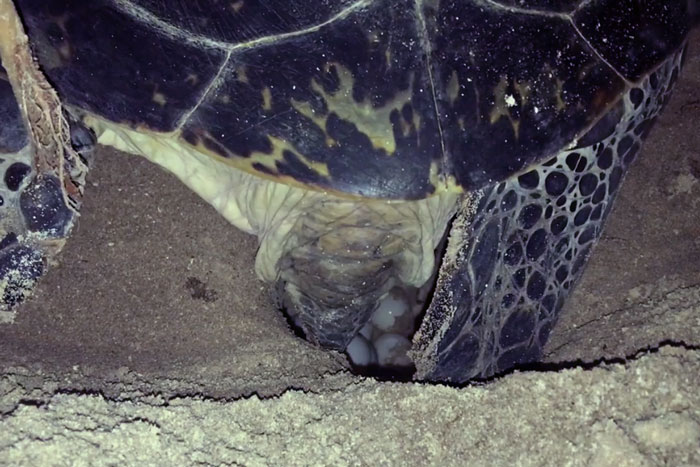
Sea turtles lay their eggs deep in the sand to protect them from potential predators and also to ensure that the weather condition of the nest is appropriate for the evolution of her eggs. As the eggs starts developing soon after they are laid, any disturbance can affect the success of the turtles hatching. One key influence on the development of the turtle egg is the temperature of the nest, which volition determine the sex activity of the turtle. Warmer temperatures produce female turtles, libation temperatures produce males. The sexual practice ratio of the nest tin vary, because some may be further downwardly and therefore cooler. A nest can have between 100-200 eggs.
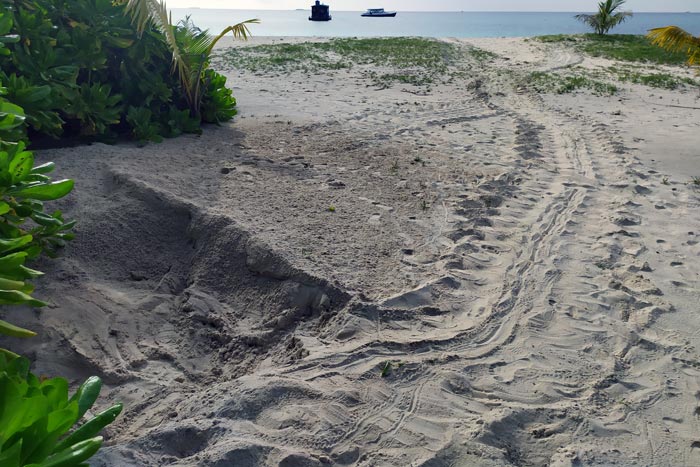
Turtles tin can nest multiple times during the nesting menses – sometimes equally often as eight times! This is to give as many of her offspring a chance to survive as possible. Females usually nest every two weeks, giving her plenty of time to recover in between. Once she is done, she will migrate back to her foraging grounds, leaving her babies to fend for themselves.
Hatchlings Emerge From The Nest
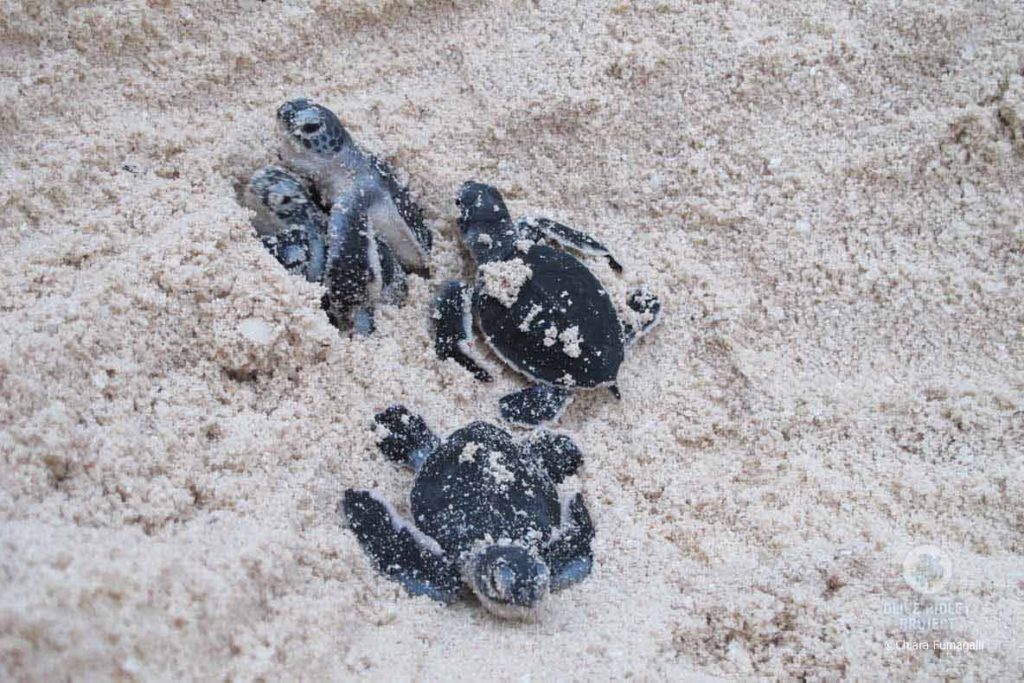
Subsequently an incubation period of roughly two months, young turtles hatch in the sand and instinctively start digging their way up.
Hatchlings apply a temporary egg tooth – 'caruncle' – to suspension through their egg vanquish. Information technology can take them up to three days to emerge from the nest. The movement of piffling flippers kicking down sand can stimulate the rest of the grouping to start earthworks also. Together, they move and residue as one – taking naps in between then they don't tire themselves out. They usually leave the nest when information technology'south cool exterior to avert getting overheated or dominicus-burnt. Hatchlings take been observed resting right at the surface of the nest, waiting for the cover of the darkness before they leave the rubber their mother has provided for them.
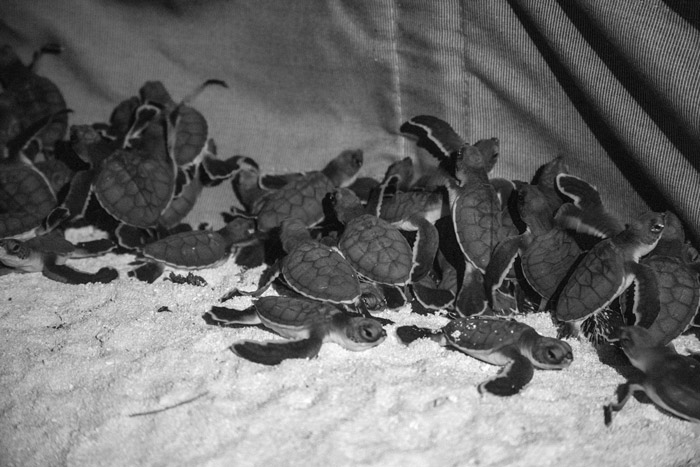
Baby Body of water Turtles' Dangerous Journeying To The Sea
Baby turtles are a source of nutrient for all kinds of animals – crabs, birds, sharks, and even fish accept their shot at these soft-shelled creatures. To increment their chances of survival, they go out for the ocean together at nighttime. Navigating past post-obit the light of the moon on the ocean's surface, body of water turtles move towards the horizon while picking up cues from the embankment which will subsequently aid them find their way back to nest. It'due south advisable to stay at a safe altitude to avoid trampling the babe turtles. It is also best to allow them to brand their way to the ocean without touching or handling them.
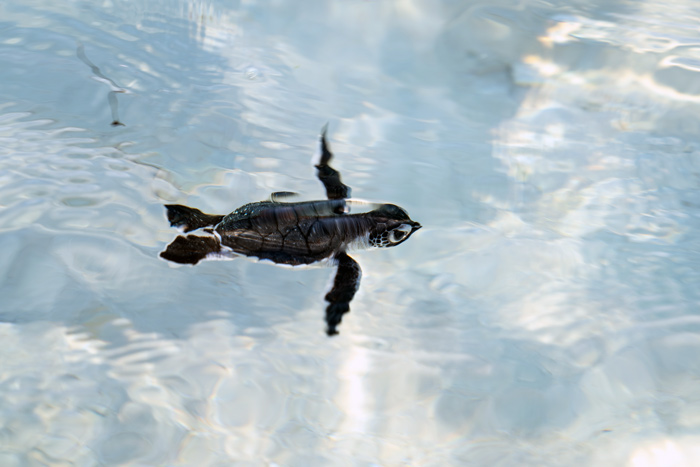
One time they're in the water, they'll boot with the might of their tiny flippers until they get to the open body of water. Here they stay protected from most predators until their shells harden and they grow to a less vulnerable size. Beingness out in the ocean helps baby turtles to develop their lungs, strengthen their muscles, and learn to properly swoop and swim. Turtles have been doing this for MILLIONS of years – so it's a convenance strategy that works and helps sustain the turtle population.
Where information technology gets tricky is human disturbances, which can make this especially challenging for sea turtles. Artificial forms of light can leave them disoriented and dislocated, making them lose their way. Holding dorsum baby turtles when they hatch causes them employ up their energy – which they accept a limited corporeality of when they hatch. This will brand their swim into the deep ocean even tougher. Trash and rubbish on the beach tin can hinder their path, not allowing them to access the sea.
How Nosotros Continue Body of water Turtle Nests Safe
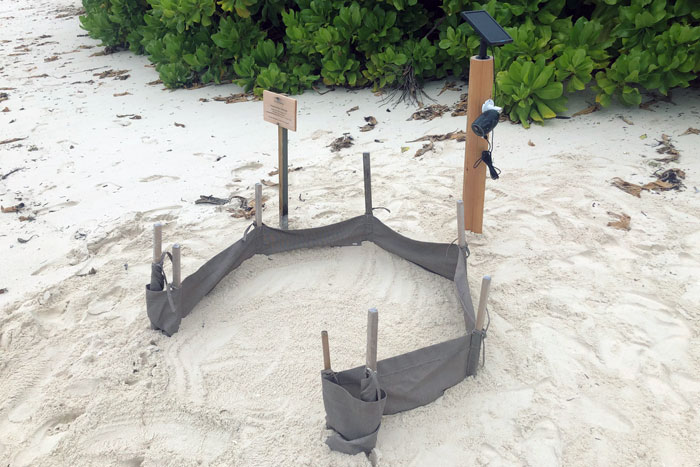
When monitoring turtle nests, our aim is to keep it every bit natural as possible. We monitor our beaches for turtle nesting tracks, which helps united states of america identify the nest location. We mark the nests with a sign and then that people will know not to walk across it or dig it upwardly accidentally, as it is ordinarily shut to the vegetation line. After 50 days of incubation, we set up up a fabric enclosure around the nest which opens towards the ocean to prevent any hatchlings from running into the vegetation or the roads. It's besides a visual cue to keep an appropriate distance from the nest.
Best Practices to Follow During a Sea Turtle Hatching Issue
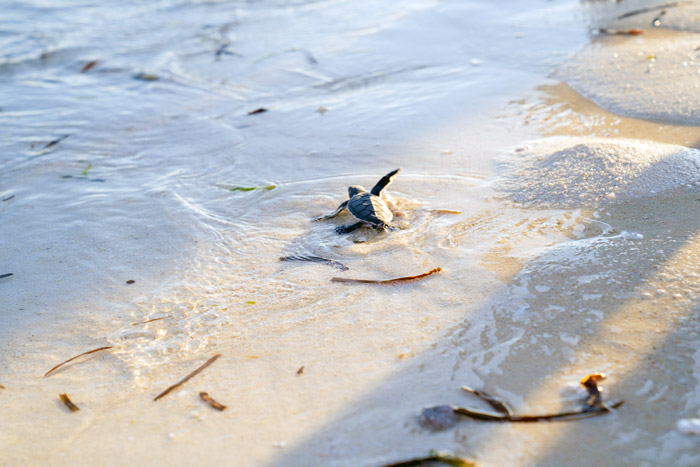
Information technology is estimated that but 1/thousand hatchlings survive till adulthood. The first steps of their journeying can exist the most difficult, If y'all are lucky enough to witness a ocean turtle hatching event, brand sure you follow these best practices to permit the hatchlings to attain the bounding main safely:
What To Exercise If You Witness A Sea Turtle Nest Hatch
- Proceed your distance.
- Plow off any lights you are using.
- Crouch down low.
- Exist quiet.
- Stay backside or to the side of the hatchlings.
- If the hatchlings head in the wrong management, try to create natural barriers similar piles of sand to encourage them to become the other way towards the ocean.
What Not To Do Around Sea Turtle Hatchlings
- No handling or picking up of turtles. Sea turtles imprint on the beach where they're born, picking up cues as they run downwards the sand. We want to make certain they come up dorsum to the same embankment. We also desire to avert getting whatever harmful bacteria from homo hands on them. In addition, it is worth noting that information technology is illegal to handle hatchlings in the Republic of the maldives and many other places.
- No interferences or buckets. Body of water turtles come out when it'south the right time for them, and nosotros have to trust their process. Information technology's all-time to exit them to become into the sea when they hatch – even when they hatch during the twenty-four hours. Considering they have only a limited amount of free energy when they hatch, they can tire themselves out trying to get out of the bucket if you identify them in one.
- No vivid lights or flash photography: If you absolutely must use lights during a ocean turtle hatching (or nesting) event, use red lights rather than white or yellowish. Make sure to point the light behind the turtles, so the hatchlings will follow the direction the light is coming from. Lights can hands disorientate hatchlings, and so keep the wink off on your camera or phone before you start filming or photographing them.
- No crowding or stepping on turtles. Clear a path for the hatchlings to run into the sea, and do not to step over it. If they head towards you, step back and give them infinite! Sometimes a hatchling can stop upwards crawling over someone if they stand up besides shut, which tin can causes a knee joint-wiggle reaction that could harm the hatchling. Be as calm equally possible, and exercise not motility around too much when watching a turtle hatching.
With these tips in mind, we hope yous're able to bask watching hatchlings safely make their way into the body of water. Even though these miraculous little creatures are more resilient than they await, nosotros can ensure they stay around for millions more than years by keeping these best practices in listen.
Download ORP's Bounding main Turtle Code of Carry
Detect The Answers To All Your Sea Turtle Questions
Ocean Turtles FAQ
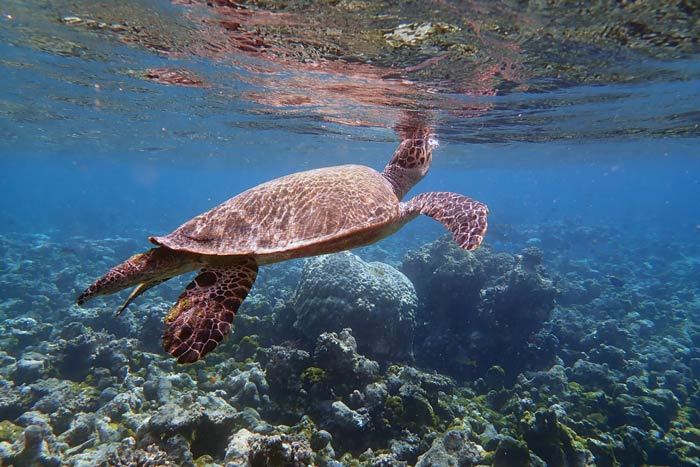
Sea turtles tin hold their breath for several hours, depending on their level of activity.
If they are sleeping, they can remain underwater for several hours. In cold water during winter, when they are effectively hibernating, they can concord their breath for up to 7 hours. This involves very little movement.
Although turtles can hold their breath for 45 minutes to ane 60 minutes during routine activity, they normally dive for 4-5 minutes and surfaces to breathe for a few seconds in between dives.
However, a stressed turtle, entangled in a ghost cyberspace for instance, quickly uses upwards oxygen stored within its body and may drown within minutes if it cannot achieve the surface.
Larn More than About Sea Turtles – Gratis Online Courses
Free

east-Turtle School – All Nigh Sea Turtles
Everything you have always wanted to know well-nigh sea turtles, from development to conservation. Suitable for all sea turtles lovers and those who desire to learn more about these fascinating creatures.
Free

Ocean Turtle Science & Conservation
Deep dive into sea turtle science and conservation. Suitable for budding conservationists and those with an interest in the science surrounding turtles, their biology and conservation.
References:
- Hays GC, Akesson S, Broderick Air conditioning, Glen F, Godley BJ, Luschi P, Martin C, Metcalfe JD & Papi F 2001. The diving behaviour of green turtles undertaking oceanic migration to and from Ascension Island: dive durations, swoop profiles and depth distribution. Journal of Experimental Biology 204: 4093-4098.
- Hays GC, Hochscheid S, Broderick Ac, Godley BJ & Metcalfe JD 2000. Diving behaviour of greenish turtles: dive depth, dive duration and activity levels. Marine Ecology Progress Series 208: 297-298.
- Hochscheid South, Bentivegna F & Hays GC 2005. Commencement records of dive durations for a hibernating sea turtle. Biological science Letters 1: 82-86.
- Lutz PL and Musik JA (eds.) 1996. The Biology of Ocean Turtles Book I. CRC Press.
The actual documentation of a bounding main turtle's age in the wild is difficult or nearly impossible. Individual turtles can be tracked for a shorter time of six month to 3 years with the help of satellite transmitters. Longterm studies rely on capture-recapture principle, just like our turtle photo id project. Each photo of a turtle represents a recapture event documenting that the individual is still live.
A report of nesting greenish turtles in Hawaii observed female turtles returning to nest for upwards to 38 years afterward they were outset identified. Bold the average historic period at get-go nesting activity of 24 years, this would testify that greenish turtles can live to upwardly to at least 62 years.
Similar estimates have been made for loggerhead turtles.
References:
- Dodd C 1988. Synopsis of the biological information on the loggerhead ocean turtle. Environmental 88.
- Humburg IH and Balazs GH 2014. Forty Years of Enquiry: Recovery Records of Green Turtles Observed or Originally Tagged at French Frigate Shoals in Northwestern Hawaiian Islands, 1973-2013. NOAA Technical Memorandum NMFS-PIFSC-40.
When sea turtles are juveniles, it is very difficult to tell their sex activity by eye as they do not differ externally. However, subsequently reaching sexual maturity male sea turtles develop a long tail, which houses the reproductive organ. The tail may extend past the hind flippers.
Female turtles take a short tail, which mostly doesn't extend more than than 10 cm (iv inches) past the border of the carapace. Male person body of water turtles (except leatherbacks) accept elongated, curved claws on their front flippers to help them grasp the female person when mating.
The sex of a sea turtle embryo is determined by the temperature of the sand: warm temperatures effect in more females while cooler temperatures result in more males.
The olive and Kemp's ridley sea turtles are the smallest species, growing simply to nearly lxx cm (but over 2 feet) in crush length and weighing up to 45 kg (100 lbs). Leatherbacks are the largest ocean turtles. On boilerplate leatherbacks measure 1.5 – 2m (4-half-dozen ft) long and weigh 300 – 500 kg (660 to 1,100 lbs). The largest leatherback ever recorded was 2,56 grand (8.4 ft) long and weighed 916 kg (2,019 lbs) !
Kemp's Ridley

55.6-66.0 cm carapace length, weight range of 25-54 kg for nesting females.
References:
- Marquez-Thousand R 1994. Synopsis of Biological Information on the Kemp's Ridley Turtle, Lepidochelys kempi (Garman, 1880). NOAA Technical Memorandum NMFS-SEFSC-343.
Olive Ridley
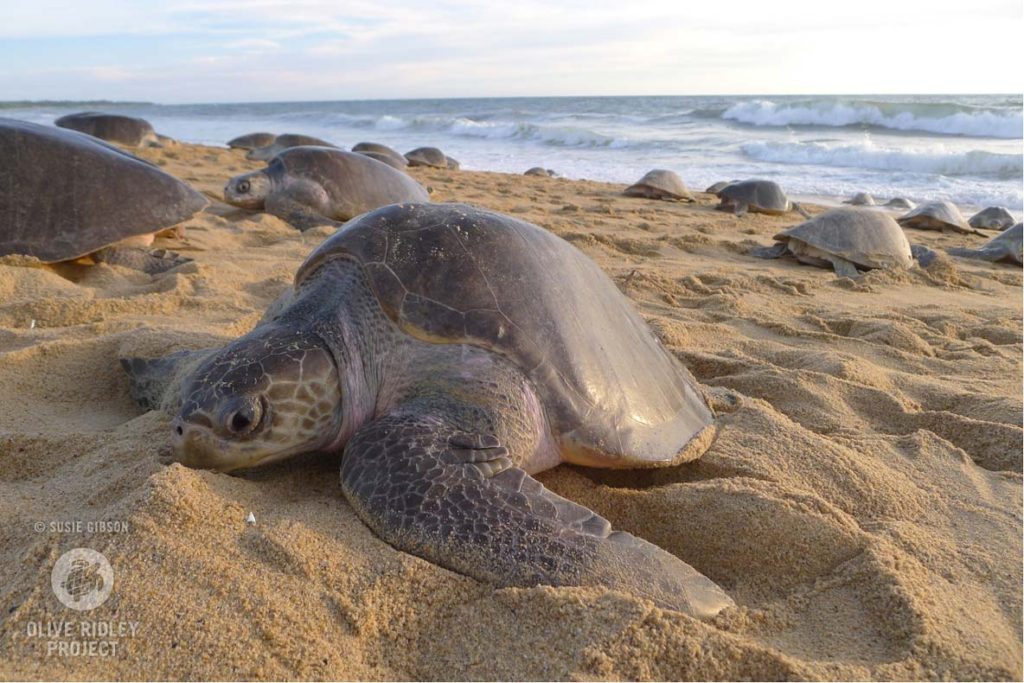
Curved carapace length 52.five-80.0 cm, weight less than 50 kg (average 35.7 kg) for nesting females.
References:
- Qureshi K 2006. Sea turtles in Pakistan. In: Shanker K and Choudhury BC (Eds.). Marine Turtles of the Indian Sub- continent. Heydarabad: India Universities Printing, pp. 217–224.Reichart HA 1993.
- Reichart HA 1993. Synopsis of biological data on the olive ridley bounding main turtle Lepidochelys olivacea (Eschscholtz 1829) in the western Atlantic. NOAA Technical Memorandum NMFS-SEFSC-336.
Hawksbills
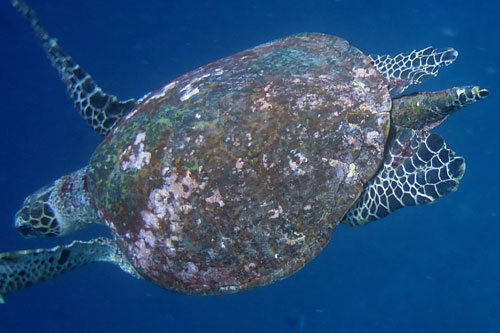
Nesting females reported between 53.3 and 95.5 cm carapace length, with weight between 27.2 and 86.two kg.
References:
- Witzell WN 1983. Synopsis of biological data on the hawksbill turtle, Eretmochelys imbricata (Linnaeus, 1766). No. 137. Food & Agronomics Org.
Green turtles
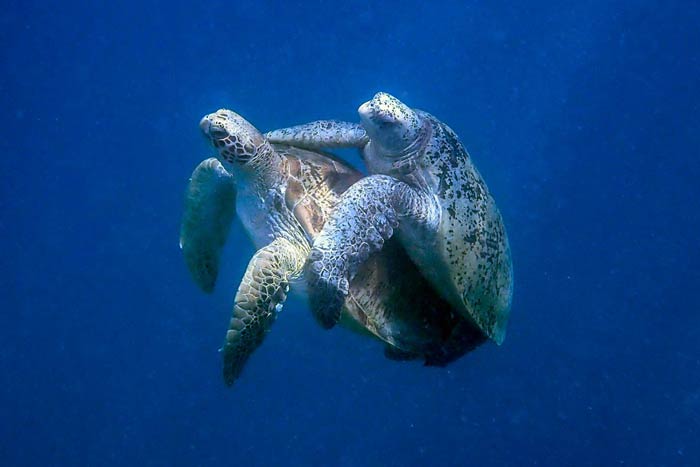
Nesting green females reported curved carapace length 75-134 cm, weight (afterward egg deposition) 45-250 kg (!).
References:
- Hirth HF 1997. Synopsis of the Biological Data on the Green Turtle Chelonia mydas (Linnaeus, 1758). Vol. two. Fish and Wildlife Service, US Department of the Interior.
Flatbacks
Ones written report (Ref. 1) found nesting females have a mean curved carapace length 86.iii cm, and hateful weight of 67.4 kg. Another report (Ref. ii) found flatbacks to be between 87.5-96.v cm.
References:
- Schäuble C, Kennett R and Winderlich S 2006. Flatback Turtle (Natator depressus) nesting at Field Island, Kakadu National Park, Northern Territory, Australia, 1990-2001. Chelonian Conservation and Biology 5: 188-194.
- Limpus CJ 1971. The Flatback Turtle, Chelonia depressa Garman in Southeast Queensland, Australia. Herpetologica 27: 431-446.
Loggerheads
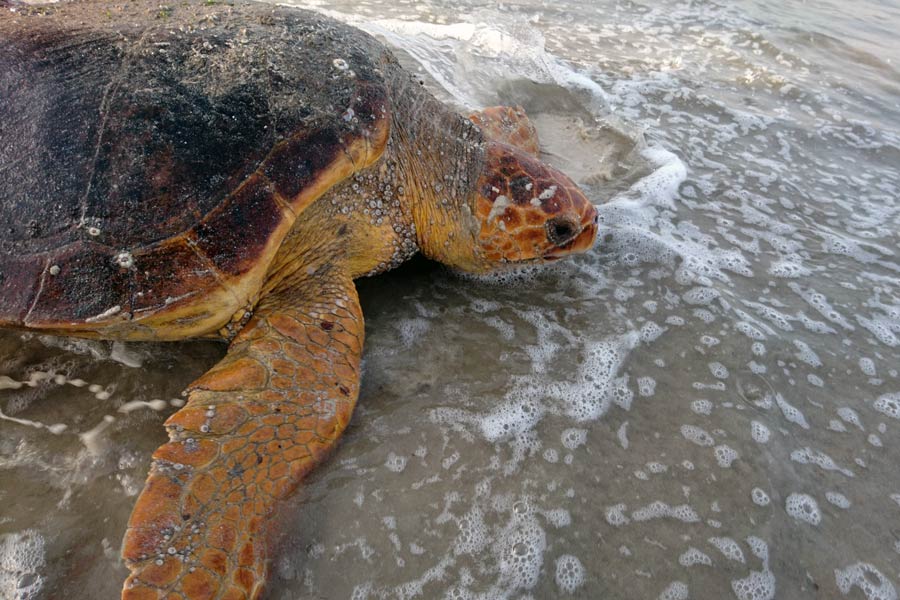
Adult loggerhead turtles measure between 65 and 115 cm in curved carapace length and typically weigh between 40 and 180 kg. The largest recorded loggerhead weighed 545 kg and measured 213 cm in presumed total torso length. On average, nesting, and therefore adult, female loggerheads take a curved carapace length of 65.one-114.9 cm and weigh between 40.0 and 180.7 kg. Males fall into the same size range (79.0-104.0 cm curved carapace length).
References:
- Brongersma LD 1972. European Atlantic turtles. Zoologische Verhandlingen 121, Leiden.
- Dodd C 1988. Synopsis of the biological data on the loggerhead sea turtle. Ecology 88: 1-119.
- Ernst CH and Lovich JE 2009. Turtles of the Us and Canada, 2d edition. John Hopkins University Printing.
Leatherbacks
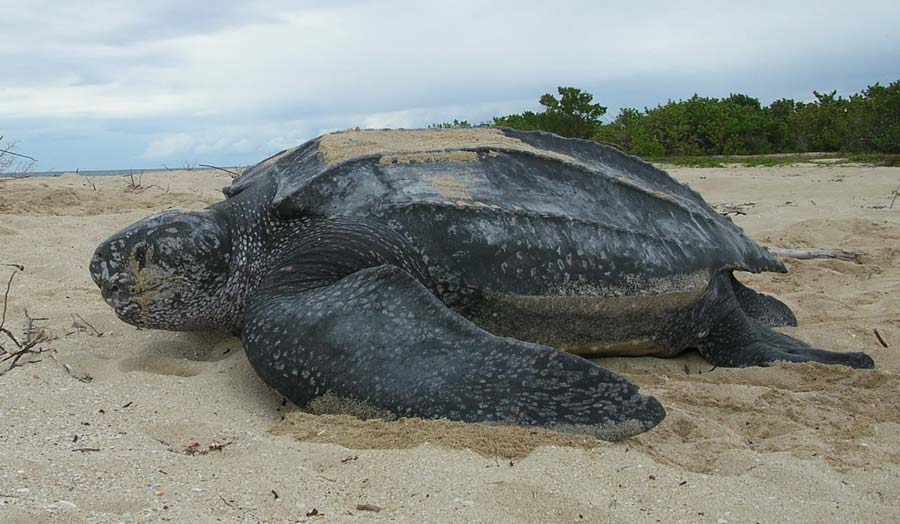
143.eight-169.5 cm curved carapace length, weight 259-506 kg recorded for nesting females all around the world. Largest ever recorded specimen was constitute dead on a beach on the coast of Wales. The adult male turtle weighed 916 kg and its trounce was 256.5 cm long. An autopsy revealed that it had drowned.
References:
- Eckert KL and Luginbuhl C 1988. Decease of a Behemothic. Marine Turtle Newsletter 43: ii-3.
- Eckert KL, Wallace BP, Frazier JG, Eckert SA and Pritchard PCH 2012. Synopsis of the Biological Data on the Leatherback Bounding main Turtle (Dermochelys coriacea). Biological Technical Publication BTP-R4015-2012, US Fish & Wild fauna Service.
Sea turtles eat a broad range of diets. Each sea turtle species has uniquely evolved to unlike environments and bachelor food depending. Sea turtles therefore play a vital role in ocean ecosystems, affecting the diversity and function of ocean habitats by what they eat. Mutual for them all is that they all lack teeth!
The specific diet of Each bounding main turtle species
Flatbacks
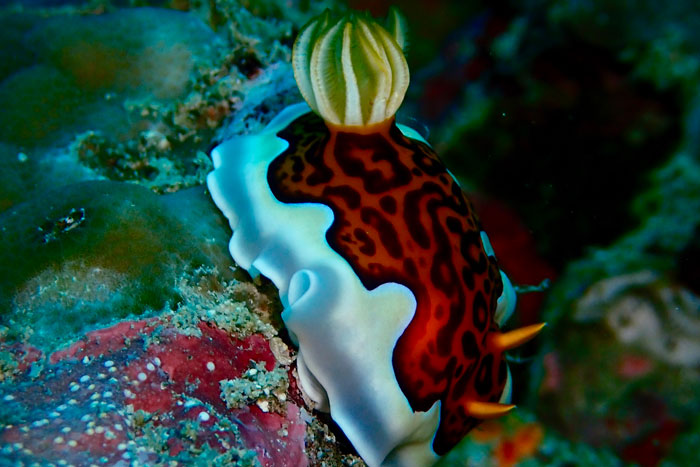
Flatbacks are mainly carnivorous, feeding in shallow waters on soft bottoms. Little is known almost this species' nutrition throughout their lifetime, but juveniles and adults are known to eat snails, jellyfish, corals and other soft bodied invertebrates.
Greens

Green turtles are vegetarian and adopt sea grasses, body of water weeds and algae equally adults, however, green turtle hatchlings are omnivorous, eating jellyfish, snails, crabs, and shrimp.
Hawksbills

Hawksbills have a bird-like beak that is used to cut through soft coral, anemones and bounding main sponges.
Kemp's Ridleys
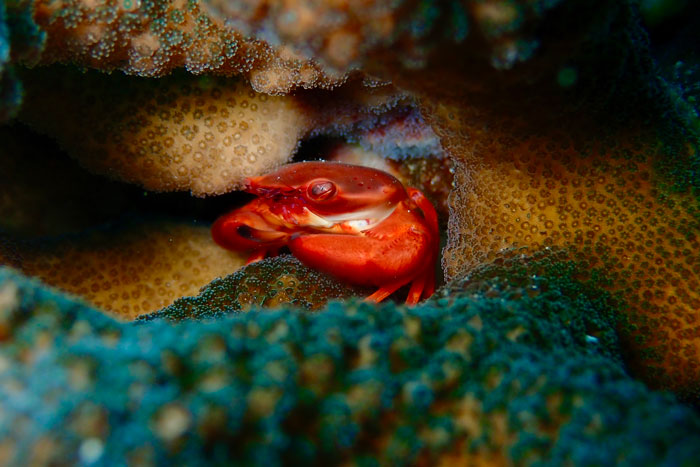
Kemp'southward ridleys are omnivores at the beginning of their lives, feeding on seaweed and small creatures similar crabs and snails. As adults, Kemp's ridleys look for food on the seabed, feeding on crustaceans, fish, molluscs, squids and jellyfish.
Leatherbacks
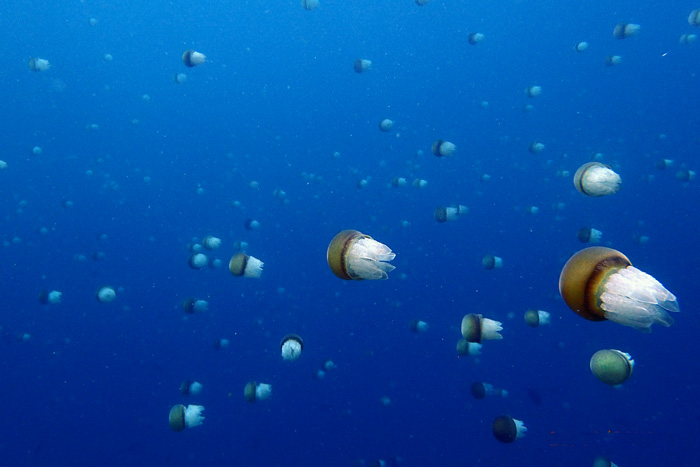
Loggerheads
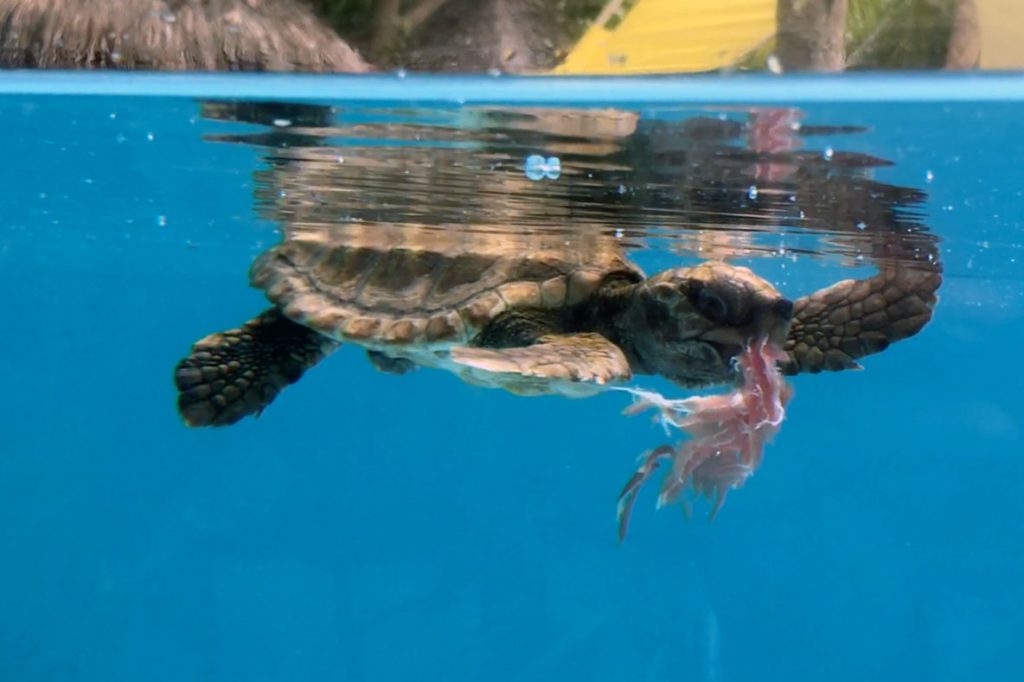
Loggerheads are carnivores, feeding on a variety of prey depending on their life stage but mainly on hard-shelled organisms such equally lobsters, crustaceans, and fish.
Olive Ridleys

Olive ridleys are omnivorous, mostly eating jellyfish, snails, crabs, and shrimp only they will occasionally consume algae and seaweed besides.
Acquire More than About Body of water Turtles – Free Online Courses
Free
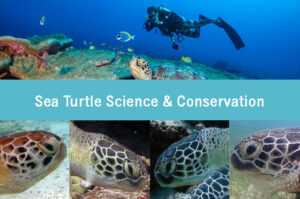
Costless

Source: https://oliveridleyproject.org/blog/best-practices-for-sea-turtle-hatching-events
0 Response to "Baby Sea Turtles Crawling to Sea Moths Into a Light"
Post a Comment